Dolomite is a common rock-forming mineral and it is abundant in india+usa. It is calcium and magnesium carbonate with the chemical composition of CaMg (CO3) 2. It is the main component of the sedimentary rocks known as dolomite and of the metamorphic rocks known as dolomitic marbles. Limestone that contains some dolomite is known as a dolomite limestone. Dolomite is rarely found in modern sedimentary settings, but dolomites are very common in the rock record. They can be geographically widespread and hundreds or thousands of feet thick. Most dolomite-rich rocks were originally deposited as calcium carbonate mud that was altered after being deposited by magnesium-rich pore water to form dolomite. Dolomite is also a common mineral in hydrothermal veins. It is often associated therewith barite, fluorite, pyrite, chalcopyrite, galena, or sphalerite. It often occurs in these veins in the form of sometimes homomorphic crystals. Physical properties of dolomite For the dolomites, there are three directions of perfect cleavage. This may not be apparent when the dolomite is fine-grained. However, when coarsely crystallized, the cleavage angles can be easily observed using a magnifying glass. Dolomite has a Mohs hardness of 3 1/2 to 4 and is sometimes found in rhombic crystals with curved faces. Dolomite reacts very weakly with cold, dilute hydrochloric acid; however, if the acid is warm or if the dolomite is powdered, a much stronger acid reaction will be seen. (Dolomite powder can be easily produced by scraping it on a line board.  Chemical classification carbonates Colorless, white, pink, green, gray, brown, black White line Vitreous luster, pearl Transparency transparent to translucent Perfect neckline, rhombic, three directions Mohs Hardness 3.5 to 4 Specific gravity 2.8 to 2.9 Diagnostic characteristics of rhombic surfaces, weakly oscillating powder form in dilute hydrochloric acid, hardness It is used in construction aggregate, cement manufacture, dimension stone, calcined to produce lime, sometimes oil and gas tanks, source of magnesia for the chemical industry, agricultural soil treatments, and mineral flux. Dolomite as a mineral has very few uses. However, dolomite has a large number of uses because it is found in deposits large enough for mining. The most common use of dolomite is in the construction industry. They are crushed and sized for use as highway core material, aggregate in concrete and asphalt, rail weight, rip or fill. It is also calcined in the production of cement and cut into blocks of a specific size known as “dimension stone”. Dolomite’s reaction with acid also makes it useful. It is used to neutralize acids in the chemical industry, in stream reclamation projects, and as a soil conditioner. Dolomite is used as a source of magnesia (MgO), a feed additive for livestock, a sintering agent, and a flux in mineral processing, and as an ingredient in the production of glass, bricks, and ceramics. Dolomite is the host rock for many deposits of lead, zinc, and copper. These deposits form when hot, acidic hydrothermal solutions move up from depth through the fault system in front of the dolomite unit. These solutions react with the dolomite, causing a low pH that results in the precipitation of minerals from the solution. Dolomite also serves as a reservoir for oil and gas. During the conversion of calcite to dolomite, a decrease in volume occurs. This can result in porous areas in the rock that can fill with oil or natural gas that migrates into them when released from other shale units. This makes dolomite a reservoir rock and a target for oil and gas exploration. Dolomite is chosen for many building and construction product applications due to its hardness and density. Some of the applications are: Asphalt-concrete mixes are found in a variety of construction applications such as highways, airport runways, parking lots, sidewalks, sidewalks, residential streets, and highways, to name a few.
Chemical classification carbonates Colorless, white, pink, green, gray, brown, black White line Vitreous luster, pearl Transparency transparent to translucent Perfect neckline, rhombic, three directions Mohs Hardness 3.5 to 4 Specific gravity 2.8 to 2.9 Diagnostic characteristics of rhombic surfaces, weakly oscillating powder form in dilute hydrochloric acid, hardness It is used in construction aggregate, cement manufacture, dimension stone, calcined to produce lime, sometimes oil and gas tanks, source of magnesia for the chemical industry, agricultural soil treatments, and mineral flux. Dolomite as a mineral has very few uses. However, dolomite has a large number of uses because it is found in deposits large enough for mining. The most common use of dolomite is in the construction industry. They are crushed and sized for use as highway core material, aggregate in concrete and asphalt, rail weight, rip or fill. It is also calcined in the production of cement and cut into blocks of a specific size known as “dimension stone”. Dolomite’s reaction with acid also makes it useful. It is used to neutralize acids in the chemical industry, in stream reclamation projects, and as a soil conditioner. Dolomite is used as a source of magnesia (MgO), a feed additive for livestock, a sintering agent, and a flux in mineral processing, and as an ingredient in the production of glass, bricks, and ceramics. Dolomite is the host rock for many deposits of lead, zinc, and copper. These deposits form when hot, acidic hydrothermal solutions move up from depth through the fault system in front of the dolomite unit. These solutions react with the dolomite, causing a low pH that results in the precipitation of minerals from the solution. Dolomite also serves as a reservoir for oil and gas. During the conversion of calcite to dolomite, a decrease in volume occurs. This can result in porous areas in the rock that can fill with oil or natural gas that migrates into them when released from other shale units. This makes dolomite a reservoir rock and a target for oil and gas exploration. Dolomite is chosen for many building and construction product applications due to its hardness and density. Some of the applications are: Asphalt-concrete mixes are found in a variety of construction applications such as highways, airport runways, parking lots, sidewalks, sidewalks, residential streets, and highways, to name a few. 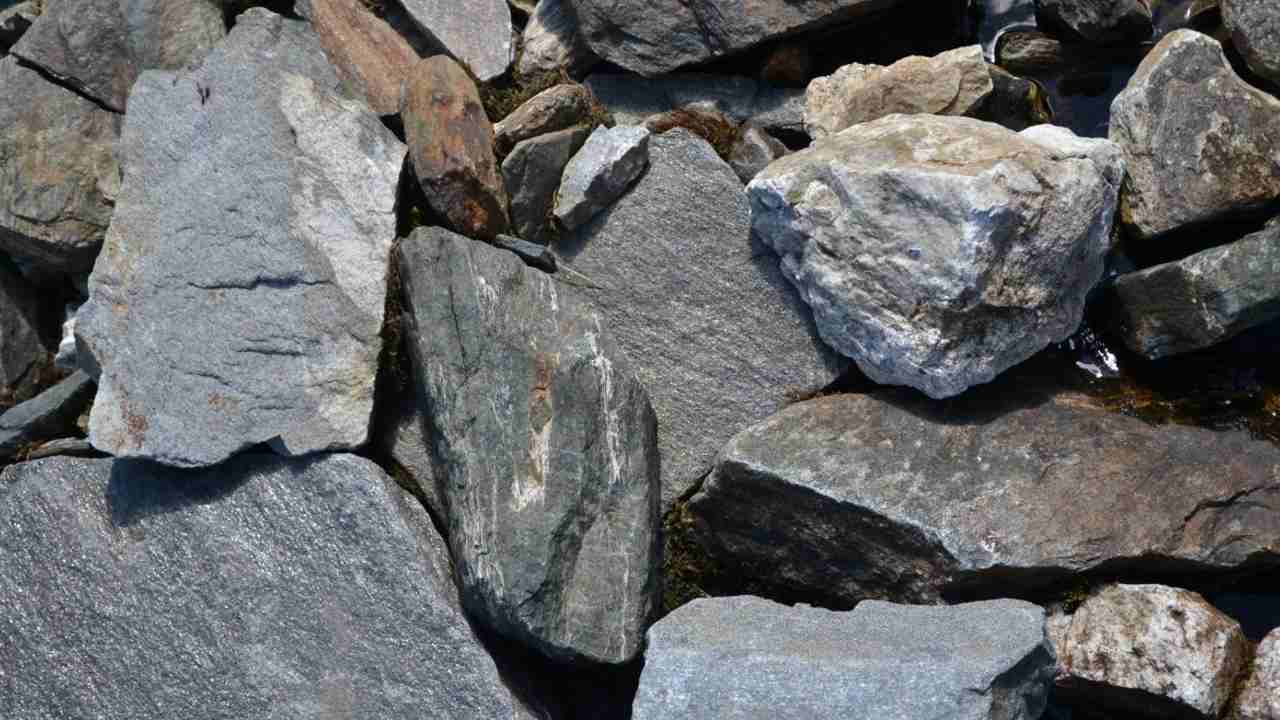
dolomite in india
The dolomite produced in India, especially in the Tulsidamar Mine in Garhwa District, Jharkhand is mainly used in the Bokaro Steel Plant. The dolomite produced in the Tumakuru district of Karnataka is supplied to the iron and manganese plants of Dandeli in the Uttar Kannada district. Dolomite is calcium and magnesium carbonate with the chemical formula CaMg (CO3) 2. It occurs naturally as a mineral and as a rock. As a mineral, dolomite exists mainly as rhombic, sometimes prismatic, translucent or translucent, colorless or white crystals. Small amounts of manganese, iron and other impurities give some dolomite rocks and their crystals (gray, pink, orange, red, yellow, green, and black). Dolomite can also refer to a sedimentary rock of at least 90% dolomite. Dolomite limestone consists of 50% to 90% dolomite by weight. The rock is also known as decomposed limestone because it is believed to have originated from limestone that has been converted into dolomite by dolomite. During the dolomite process, the calcium in the CaCO3-rich limestone is partially replaced by magnesium to form dolomite (CaMg(CO3)2). In appearance, dolomite resembles the most common calcite (CaCO3), but as the chemical formulas indicate, its chemical composition is different. Calcite does not contain magnesium ions. Cases of dolomite are widespread in almost all parts of India. The total recoverable reserves of all grades of dolomite are 4387 million tons. BF and SMS grade reserves are large, but thermal grade reserves are 118 million tons (only 2.7% of the reserves of the whole of India). About 92 percent of the dolomite reserves are distributed in 7 states Madhya Pradesh-Chhattisgarh, Orissa, Gujarat, Karnataka, West Bengal, Uttarakhand, and Maharashtra.  About 90 percent of the country’s dolomite production comes from five states Orissa, Chhattisgarh, Andhra Pradesh, Jharkhand, and Rajasthan. Among these, Orissa and Chhattisgarh together account for more than 57 percent of India’s total dolomite production. Dolomite production saw a 238-fold increase between 1951 and 548. Production was only 14,000 tons in 1951 and rose to 33,291 tons in 2002-03. The production value registered a faster increase of 12,247 times during this period. Regional Distribution Orissa is the largest producer of dolomite, contributing 28.81 percent of the national production. Important dolomite deposits here are found in Sudargarh, Sambalpur, and Koraput districts. Permitrapur (reserve 256 million tons), Hattibari, Khatipur, Pelde (in Sundargarh district), and Sulai (Sampalpur district; reserve of 5 million tons) are the important producers. The output from the Permitrapur district is sent to the iron and steel mills of Rurkila, Jamshedpur, and Bornpur. Chhattisgarh – Madhya Pradesh – Chhattisgarh (including Madhya Pradesh) is the second largest producer of dolomite, providing 30.85 percent of the national production. Most of the supplies here come from Kodwa Mohpata (Durg district), Chatan, Heri, Durarpatta, Atta, and Baradwar (Bilaspur district). The ore is supplied to Bhilai Steel Plant. Jharkhand Bihar In Jharkhand, dolomites are found in Singbhum (north of Chibiusa). Shahabad (near Bangari), Palamau and Daltunganj districts. Jharkhand contributes 7.75 percent of the country’s total dolomite production. Other: Other major dolomite-producing regions of the country include Vadodara and Bhavnagar regions in Gujarat. Jalpaiguri district in West Bengal; Salem and Tirunelveli districts of Tamil Nadu; and Kroll Hill District in Himachal Pradesh. Most of the dolomite produced in the country is used in steel mills. Gujarat production is milled into flakes, while Uttarakhand (Dehra Dun) production is consumed at Naya Nangal Fertilizer Plant.
About 90 percent of the country’s dolomite production comes from five states Orissa, Chhattisgarh, Andhra Pradesh, Jharkhand, and Rajasthan. Among these, Orissa and Chhattisgarh together account for more than 57 percent of India’s total dolomite production. Dolomite production saw a 238-fold increase between 1951 and 548. Production was only 14,000 tons in 1951 and rose to 33,291 tons in 2002-03. The production value registered a faster increase of 12,247 times during this period. Regional Distribution Orissa is the largest producer of dolomite, contributing 28.81 percent of the national production. Important dolomite deposits here are found in Sudargarh, Sambalpur, and Koraput districts. Permitrapur (reserve 256 million tons), Hattibari, Khatipur, Pelde (in Sundargarh district), and Sulai (Sampalpur district; reserve of 5 million tons) are the important producers. The output from the Permitrapur district is sent to the iron and steel mills of Rurkila, Jamshedpur, and Bornpur. Chhattisgarh – Madhya Pradesh – Chhattisgarh (including Madhya Pradesh) is the second largest producer of dolomite, providing 30.85 percent of the national production. Most of the supplies here come from Kodwa Mohpata (Durg district), Chatan, Heri, Durarpatta, Atta, and Baradwar (Bilaspur district). The ore is supplied to Bhilai Steel Plant. Jharkhand Bihar In Jharkhand, dolomites are found in Singbhum (north of Chibiusa). Shahabad (near Bangari), Palamau and Daltunganj districts. Jharkhand contributes 7.75 percent of the country’s total dolomite production. Other: Other major dolomite-producing regions of the country include Vadodara and Bhavnagar regions in Gujarat. Jalpaiguri district in West Bengal; Salem and Tirunelveli districts of Tamil Nadu; and Kroll Hill District in Himachal Pradesh. Most of the dolomite produced in the country is used in steel mills. Gujarat production is milled into flakes, while Uttarakhand (Dehra Dun) production is consumed at Naya Nangal Fertilizer Plant. 
dolomite rock in USA
Dolomite in the USA forms the main mineral in rocks that form cliffs along the Mississippi River, such as Granddad Bluff near La Crosse. Dolomite is found throughout the world, in many places, with some of the best known found in Europe and North America. Dolomite has been reported in 19 counties in Ohio, in western Ohio small crystals are present in places and granular agglomerates are found in the cavities and fissures of Dolostone. Additionally, crystals and granular aggregates of minerals have been found in lime concrete seams in the Ohio Shale. Asphalt-concrete mixes are found in a variety of construction applications such as highways, airport runways, parking lots, sidewalks, sidewalks, residential streets, and highways, to name a few. Glass and ceramics. Dolomite is an abundant mineral in Wisconsin. It is an important rock-forming mineral in sedimentary dolomites within the Prairie du Chien Group (Oneota and Shakopee Formations) and the Sinnepee Group (Platteville, Decorah, and Galena Formations) and Niagaran rocks. These outcrops dominate a range that extends from the lower Saint Croix River westward, south along the Mississippi River to the Illinois border, west through the southern quadrant of the state, and continuing into the north along the entire shoreline of Lake Michigan.  Dolomite is believed to be a secondary substitute for the original limestone while the sediments were undergoing the icing process. Dolomite also forms as diluted crystals later that coat the tops of dolomites. Dolomite can form as a hydrothermal alternative mineral, and as such is particularly abundant as an impurity mineral in ore deposits in the lead-zinc region of the upper Mississippi Valley of southwestern Wisconsin. Ferroan dolomite occurs in many of the state’s Precambrian iron formations. Finally, dolomite is found locally in the marbled state. Mentioned below are just a few of the most typical or important dolomite sites. Ashland County – Dolomite is a rock-forming mineral common in the Bad Dolluston River found throughout the Pinoki Range. It is associated with calcite, tremolite, chlorite, quartz, cerite, pyrite, and magnetite. Some of the areas drawn by Van Hesse and Irving (1892) are N.W. N.W. Sec. 22 T.44N R.5W; Along the Marengo River in the southeast. 15 T.44N R.5W, and at Penokee Gap on SE NW sec. 14 T.44N R.3W. A ferroan variety of dolomite is a rock-forming mineral in the Ironwood iron formation through the Penokee iron group. Here, the fine-grained lumps are formed into elegant interlocking lumps with siderite bands. Other associated minerals are magnetite, hematite, granite, chlorite, and quartz. They can be found in many places within Ashland County and neighboring Iron County. Specific areas of the Penokee Gap are found at NW Sec. 14 T.44N R.3W (Van Hise and Irving, 1892) and the Berkshire Mine on Whittlesey Mountain at SW SE Sec. 9 T.44N R.2W (Laibourne, 1979).
Dolomite is believed to be a secondary substitute for the original limestone while the sediments were undergoing the icing process. Dolomite also forms as diluted crystals later that coat the tops of dolomites. Dolomite can form as a hydrothermal alternative mineral, and as such is particularly abundant as an impurity mineral in ore deposits in the lead-zinc region of the upper Mississippi Valley of southwestern Wisconsin. Ferroan dolomite occurs in many of the state’s Precambrian iron formations. Finally, dolomite is found locally in the marbled state. Mentioned below are just a few of the most typical or important dolomite sites. Ashland County – Dolomite is a rock-forming mineral common in the Bad Dolluston River found throughout the Pinoki Range. It is associated with calcite, tremolite, chlorite, quartz, cerite, pyrite, and magnetite. Some of the areas drawn by Van Hesse and Irving (1892) are N.W. N.W. Sec. 22 T.44N R.5W; Along the Marengo River in the southeast. 15 T.44N R.5W, and at Penokee Gap on SE NW sec. 14 T.44N R.3W. A ferroan variety of dolomite is a rock-forming mineral in the Ironwood iron formation through the Penokee iron group. Here, the fine-grained lumps are formed into elegant interlocking lumps with siderite bands. Other associated minerals are magnetite, hematite, granite, chlorite, and quartz. They can be found in many places within Ashland County and neighboring Iron County. Specific areas of the Penokee Gap are found at NW Sec. 14 T.44N R.3W (Van Hise and Irving, 1892) and the Berkshire Mine on Whittlesey Mountain at SW SE Sec. 9 T.44N R.2W (Laibourne, 1979). Bayfield County: Dolomite is a rock-forming mineral that forms scattered blocks of marble in Grandview Quarry, NW NW NW Sec. 22 T.44N R.5W. Here it is associated with tremolite, calcite, and quartz (Modry, 1979). Buffalo County: Rhombic dolomite crystals are common in the Prairie du Chien Group dolomites throughout the county. They are gray to orange and rarely very pale pink. There are some quarries where these crystals are found in NW NW Sec. 24 T.22N R.12W near Karim, SE SE Sec. 3 T.20N R.12W East Cochrane, and SE NW NE Sec. 14 T.20 N R. 12W, also east of Cochrane (WS Cordua, field notes). Dodge County: Dolomite is a minor mineral in the oleic iron ore of the Nida Formation, as revealed in the old mines at T.11N R.16E, East Neda (Hawley and Beavan, 1934). Dolomite is found as an important rock-forming mineral in the Silurian dolomites exposed in a 3 km quarry. North Knowles (Soderman and Carusi, 1963). Al-Bab County – Dolomite is an important rock-forming mineral in Dolostone throughout the province. It can be found, among many other places, in a quarry near Hasbro in the center of Sec. 18 T.13N R.17E; in a quarry near Chilton in sec. 25 T.18N R.19E, and in a quarry two miles north of Sturgeon Bay (Soderman and Carozzi, 1963). Dolomite is present as rhombic Idris crystals with fluorite in a quarry at Sturgeon Bay. (Carl Cochran, 1999, Communications.). FOND DU LAC: Dolomite is found in Dolostone and as effervescent crystals in Ripon Lime and Materials Company’s quarry, Northwest Sec. 20 T.16N R.14E, just west of Ripon. Grant County: the Dolomites are abundant throughout the lead-zinc region of the county’s upper Mississippi Valley, both as a component of the host rock dolomite or as an ore of later hydrothermal impurities. In ore deposits, the original carbonate is often replaced by a poorly cemented “sandy” aggregate of rhombic dolomite. Later veins contain pink to gray scales of dolomite crystals in association with galena, sphalerite, marcasite, pyrite, and calcite. Most of the county’s listed sites under these minerals also contain dolomite.
Bayfield County: Dolomite is a rock-forming mineral that forms scattered blocks of marble in Grandview Quarry, NW NW NW Sec. 22 T.44N R.5W. Here it is associated with tremolite, calcite, and quartz (Modry, 1979). Buffalo County: Rhombic dolomite crystals are common in the Prairie du Chien Group dolomites throughout the county. They are gray to orange and rarely very pale pink. There are some quarries where these crystals are found in NW NW Sec. 24 T.22N R.12W near Karim, SE SE Sec. 3 T.20N R.12W East Cochrane, and SE NW NE Sec. 14 T.20 N R. 12W, also east of Cochrane (WS Cordua, field notes). Dodge County: Dolomite is a minor mineral in the oleic iron ore of the Nida Formation, as revealed in the old mines at T.11N R.16E, East Neda (Hawley and Beavan, 1934). Dolomite is found as an important rock-forming mineral in the Silurian dolomites exposed in a 3 km quarry. North Knowles (Soderman and Carusi, 1963). Al-Bab County – Dolomite is an important rock-forming mineral in Dolostone throughout the province. It can be found, among many other places, in a quarry near Hasbro in the center of Sec. 18 T.13N R.17E; in a quarry near Chilton in sec. 25 T.18N R.19E, and in a quarry two miles north of Sturgeon Bay (Soderman and Carozzi, 1963). Dolomite is present as rhombic Idris crystals with fluorite in a quarry at Sturgeon Bay. (Carl Cochran, 1999, Communications.). FOND DU LAC: Dolomite is found in Dolostone and as effervescent crystals in Ripon Lime and Materials Company’s quarry, Northwest Sec. 20 T.16N R.14E, just west of Ripon. Grant County: the Dolomites are abundant throughout the lead-zinc region of the county’s upper Mississippi Valley, both as a component of the host rock dolomite or as an ore of later hydrothermal impurities. In ore deposits, the original carbonate is often replaced by a poorly cemented “sandy” aggregate of rhombic dolomite. Later veins contain pink to gray scales of dolomite crystals in association with galena, sphalerite, marcasite, pyrite, and calcite. Most of the county’s listed sites under these minerals also contain dolomite.
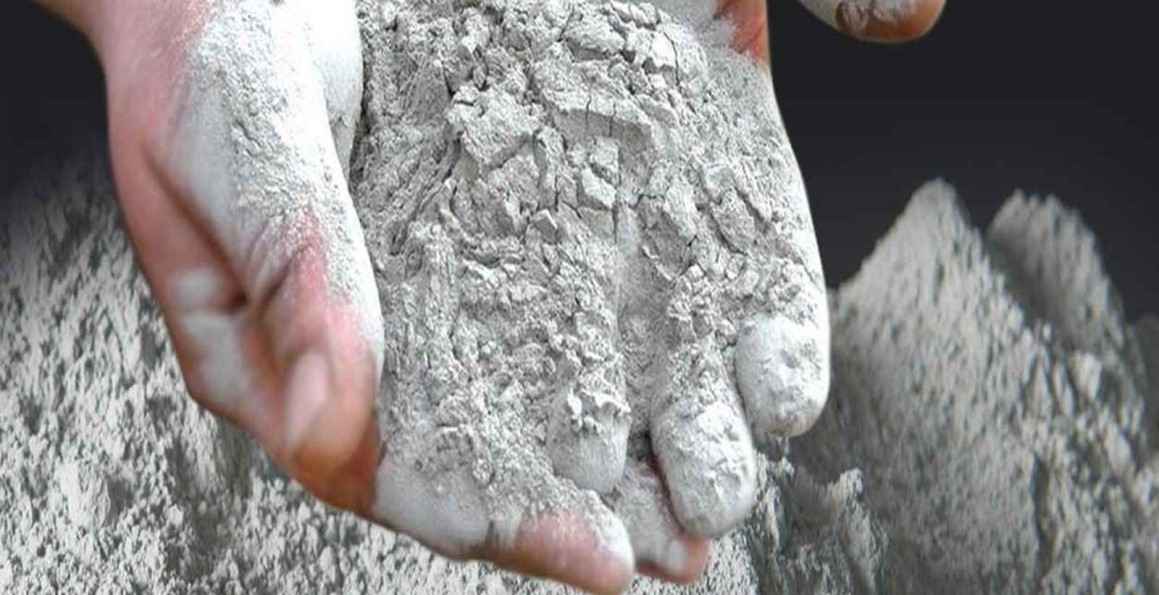
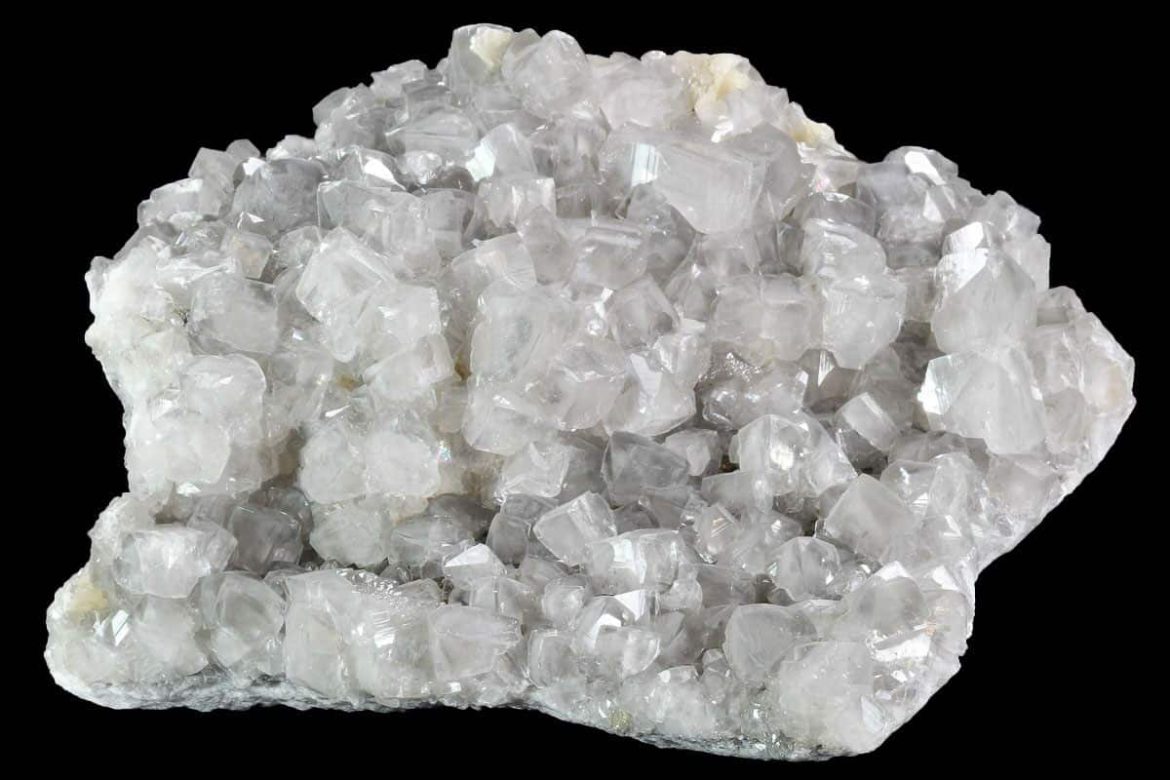
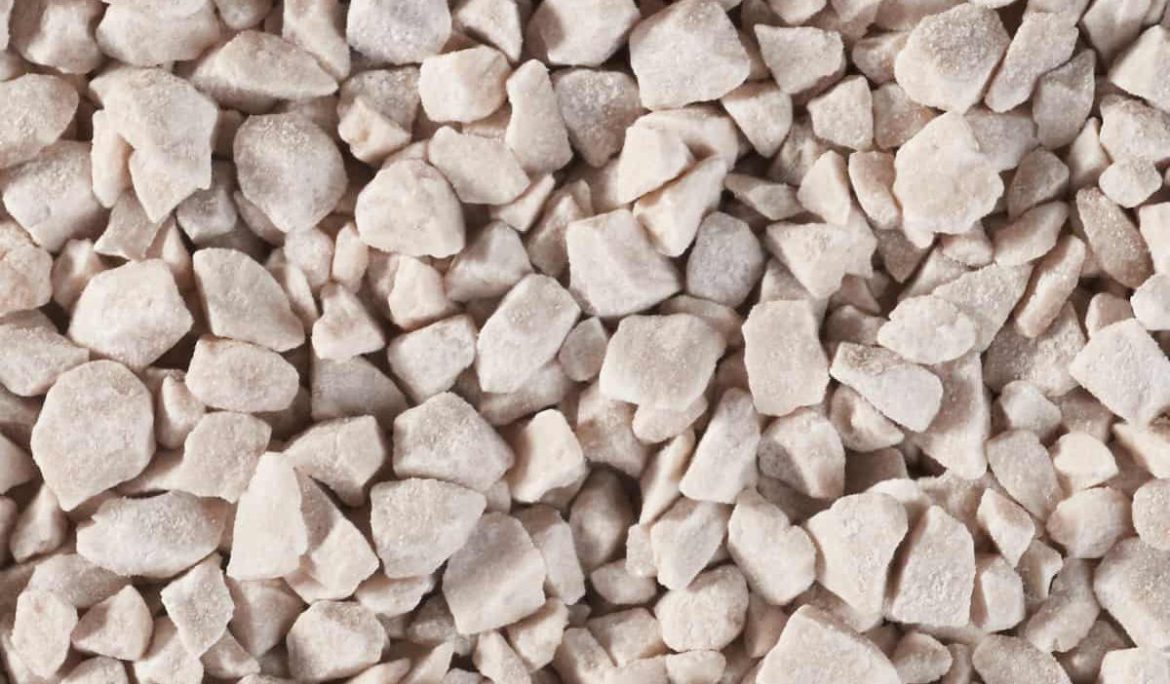
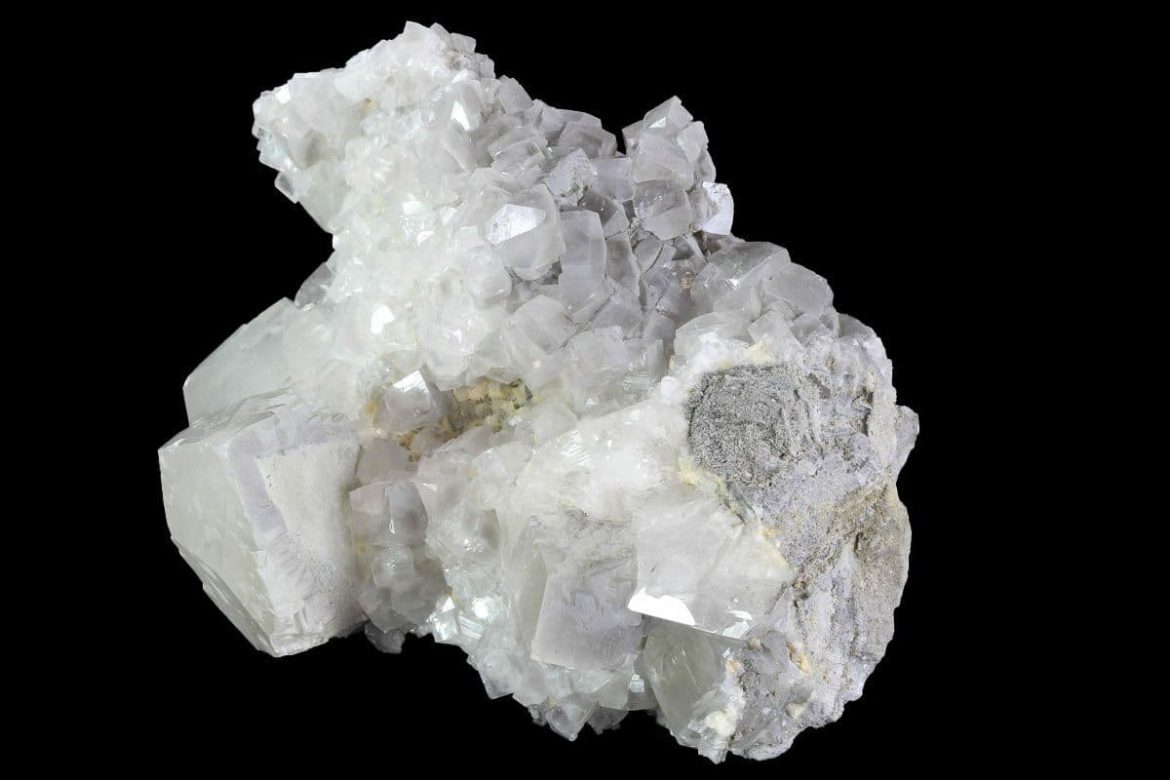
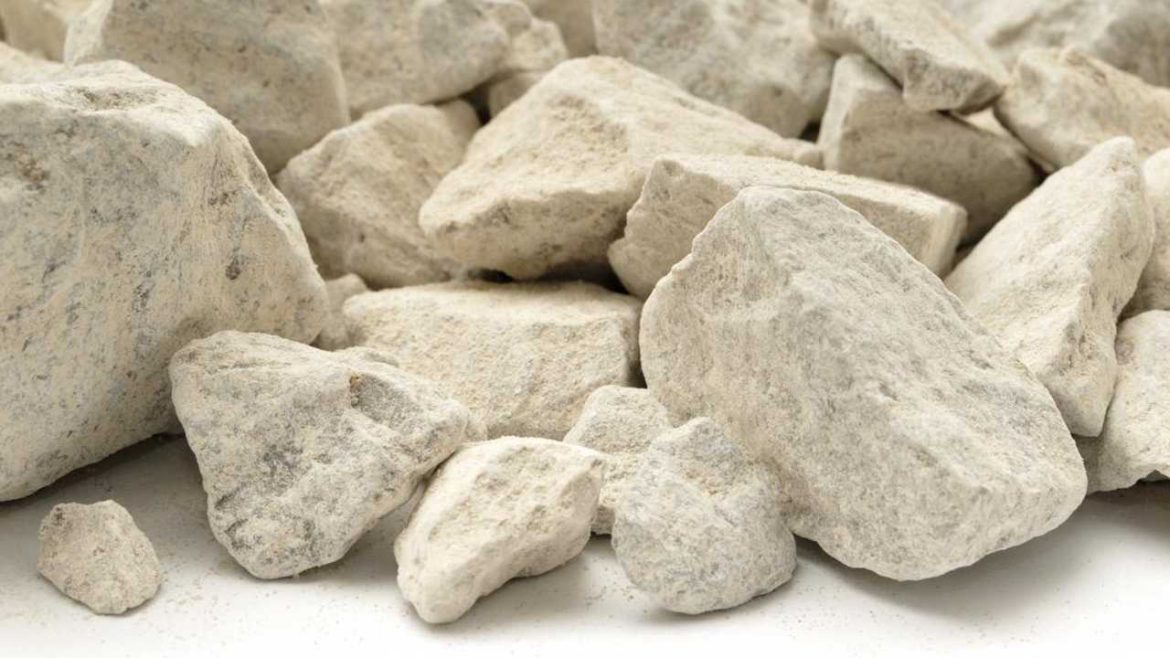
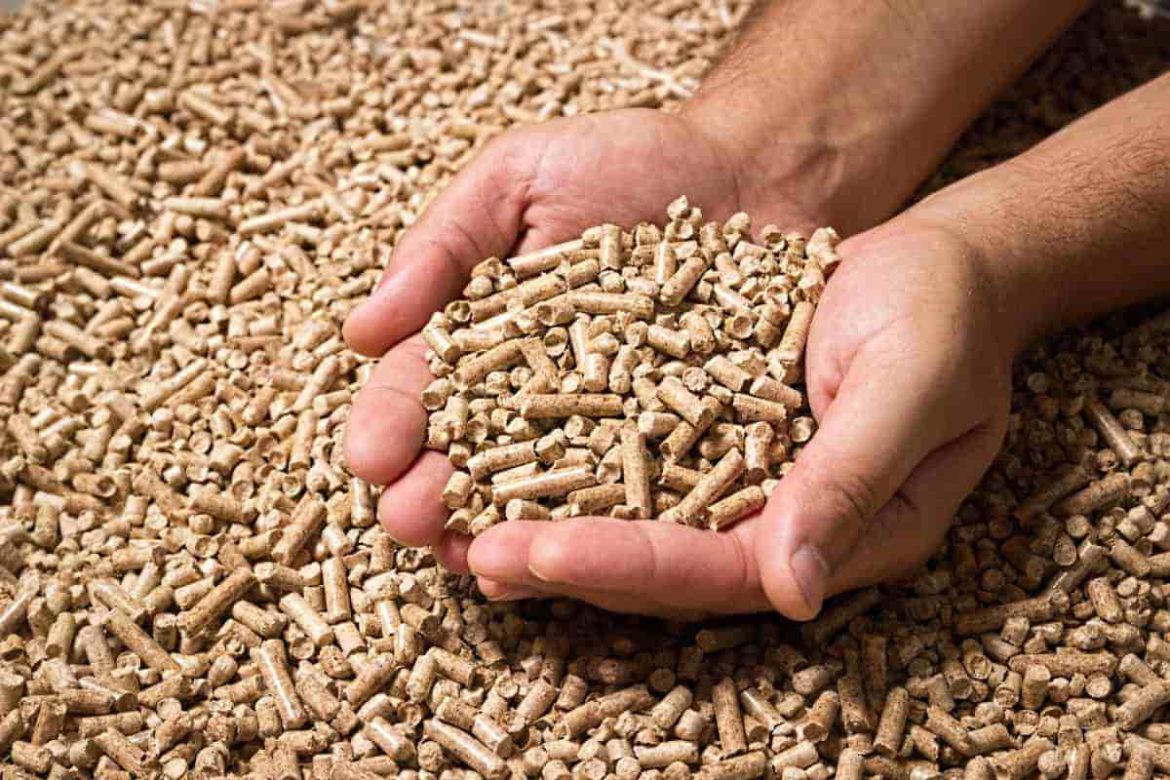
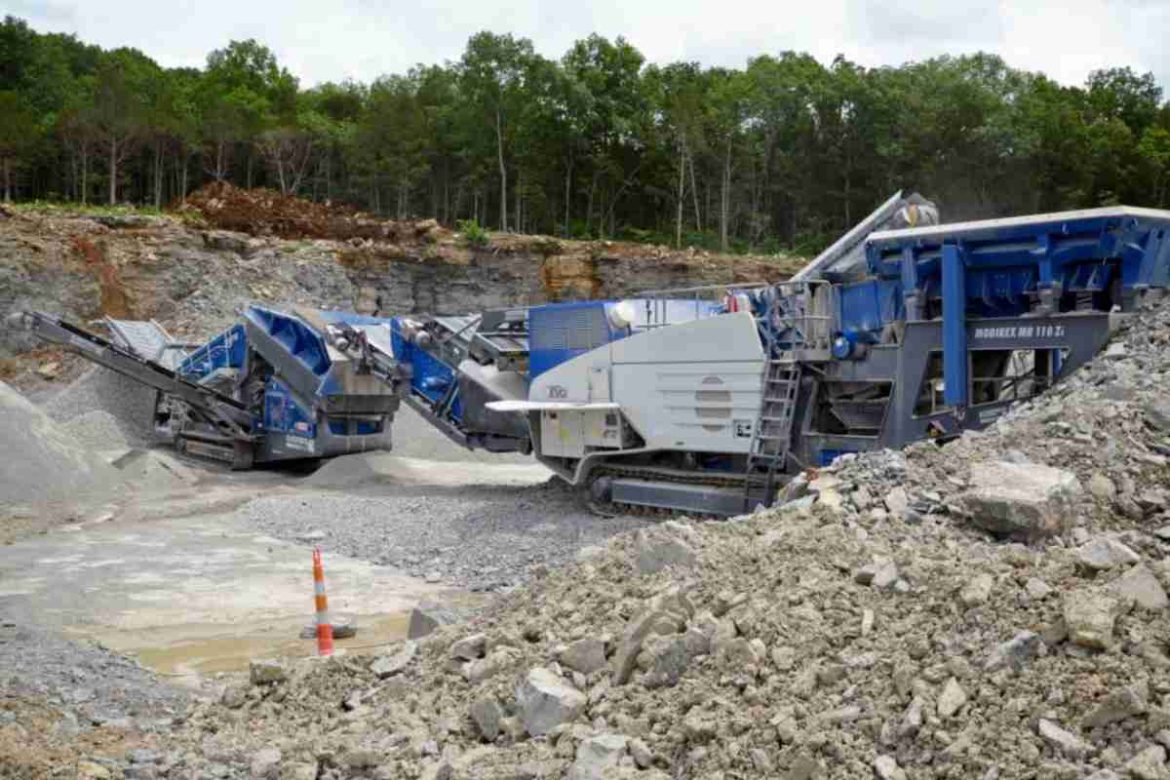
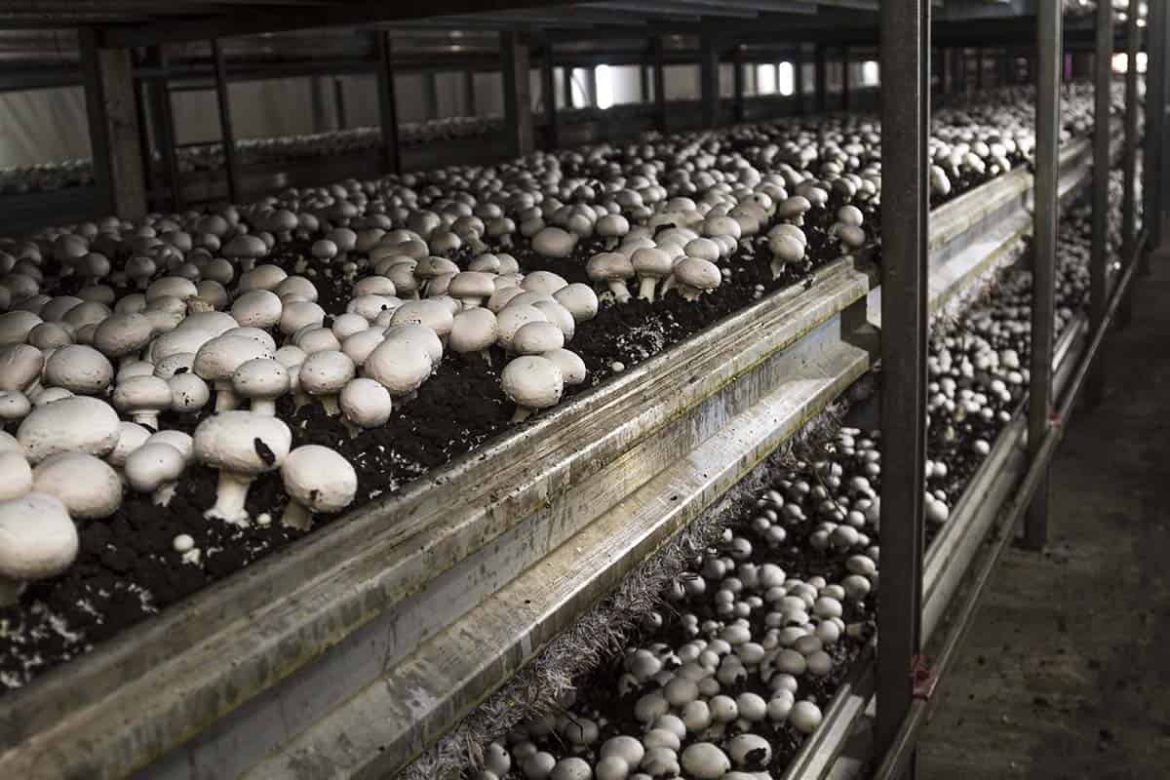
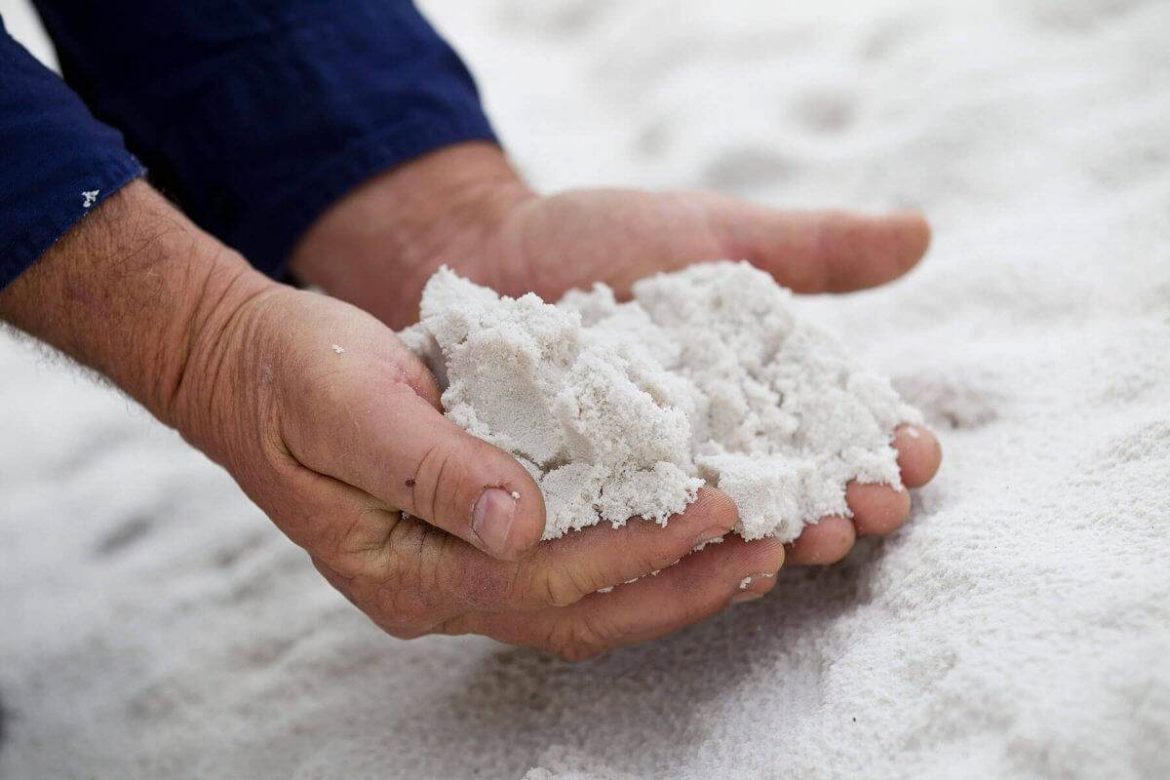
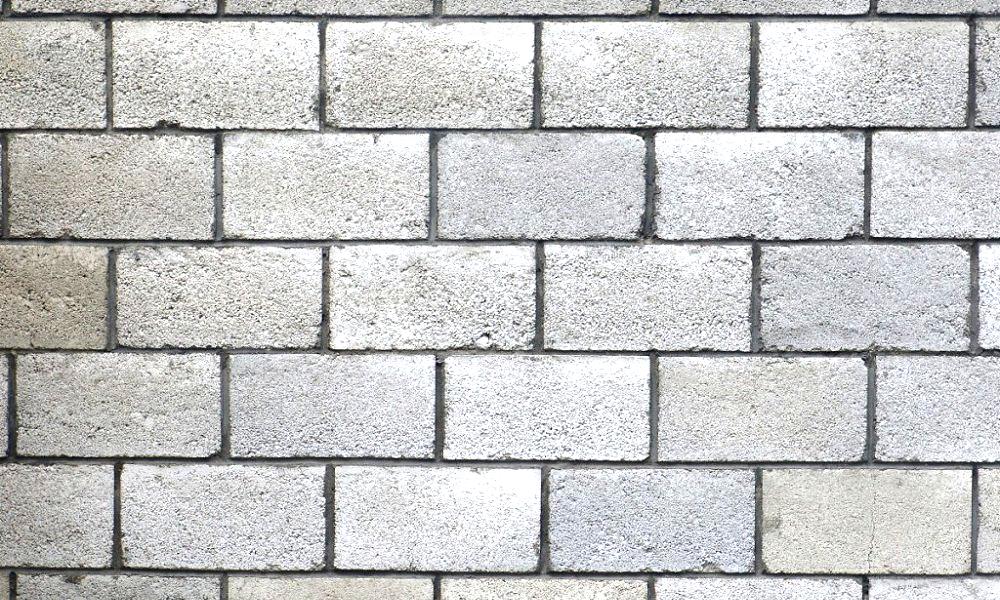
Your comment submitted.